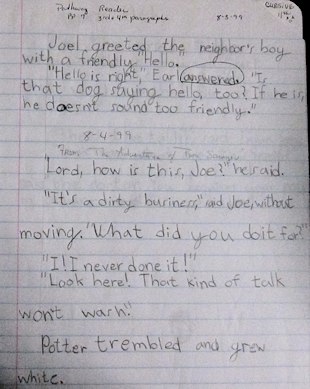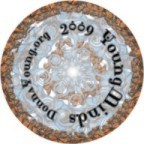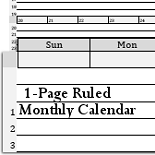Copy Work & Dictation That We Did
A few ideas for copy-work and dictation ...
Donna Young, 2002
Grades K-2
As soon as your child can write letters and words, he should begin copy work. The early form of copy work consists of your child looking at a letter or a word that you wrote on the whiteboard or a piece of paper and he copies it on his paper. This is a skill that your child should learn! It will take a while to master it, so do copy work several times a week. Start slowly, one or two letters or numbers at a time.
By the time he is in the first grade, he may be able to begin copying words. Sometime during the first grade you should introduce your child to a sentence. Choose simple two-word sentences such as [We ate.] [Boy runs.] [Girl plays.] Point out to your child that the beginning of a sentence is capitalized and the sentence has an ending mark. [a period] Over several lessons, you may wish to introduce your child to all of the ending marks. [period, question mark, exclamation mark]
Other punctuation: Should you wish to introduce your child to
commas, you could approach it in this fashion: You could instruct your child
to get 3 of his favorite items. He could write a sentence and include his
items such as: I like balls, legos, and cars. If this is too distracting, then
you could write a sentence on the white board for your child to copy.
Sentences like:
[I see trees, grass, and birds.] [I race with Tom, Mary, and Bob.] This
sentence could include capitalization instruction.
Apostrophes: Teach these contractions to show the use of apostrophes
(apostrophes show that letters have been left out):
[I'm] [let's]
The nots: [can't] [aren't] [don't] [hasn't] [isn't] [didn't] [hadn't]
[wasn't]
pronouns: [he's] [it's] [I've] [she's] [I'll] [we'll] [you'll] [we're]
[you'll] [you've] [they'll] [they've]
some of the harder nots: [weren't] [won't] [haven't] [doesn't] [shouldn't]
[wouldn't] [couldn't]
Grade 3 and Beyond:

A photograph of one of our copy work or dictation sessions. This exercise was one of several in which the children practiced punctuation and indenting. Of course proofreading and the other ever-present parts of copy work or dictation were practiced.
Children that are at third grade level can start copy-work from books. Start small at first by having them copy 5 or 6 lines from a novel. The first thing that you should bring to their attention is how paragraphs are indented. For my daughter, I drew a pale line on her notebook paper to give her a guide for indenting. Once she learned and remembered how far to indent, I stopped drawing the line.
From the start, have your children proofread and correct their work. You then should check their work and if they missed something, have them proofread once more. Show them how to proofread if they do not know how. Do not badger them if they do not catch all of their mistakes when they proofread. At first they may miss a lot of their copying errors when they proofread, but they will improve with time.
Once your children are proofreading very well, then you can give them longer selections to copy, perhaps 10 to 12 lines. This time as you find selections for them to copy, look for certain elements of punctuation that you wish to teach them. Quotation marks are quite easy to learn first. When they learn quotation marks, they will also learn how to use commas along with the quotation marks. Remember to have them proofread their work once they are finished.
Move along in this manner as your children progress. Their third year is also a good time to introduce them to action verbs and concrete nouns. When you feel that they are ready, then you may wish to have them underline the nouns in the copy-work selections during their learning period and later find the action verbs in the copy-work selections while they are learning verbs.
If you are going to use copy work and dictation as the main tool for learning language arts through their grammar school years, then you may wish to invest in an English Handbook.
Eventually copy-work can develop into dictation. To use dictation, you will carefully choose a reading selection, and then you will read the selection to your child. He writes while you read. Once you are finished reading, allow him to go over his work and check for possible errors. Always choose selections that are within their abilities, with few new elements, such as unfamiliar punctuation and very strange words. It is unfair to expect a child to know how to use hyphens if they have never learned, so please choose dictation selections carefully.
There will be times that you will want your child to read aloud the selection. As he reads, make sure he pauses at the appropriate punctuation marks such as commas and periods. Exclamatory sentences should be read with more feeling. The goal is for the children to learn to read aloud while paying attention to punctuation and without speaking in a monotone voice. Reading aloud and doing it well is a skill that takes plenty of practice. This skill can be practiced several times a week using their copy work selections, reading poetry, reading short stories, and reading from their Bible. To document their improvement, you may wish to record them occasionally with a cassette player or a camcorder.
Note: These suggestions may or may not align with any method that is popular. The suggestions are simply what we did during some of the time.
Donna Young
Hello Visitor!
I am currently working on this website to add to its ginormousness. Thank you for visiting, and please subscribe yearly to access my many printable files! Donna Young
May 13, 2021

 The site-cd, YoungMinds,
The site-cd, YoungMinds, Math and Art
Math and Art Color Theory Assignment Suggestions
Color Theory Assignment Suggestions


